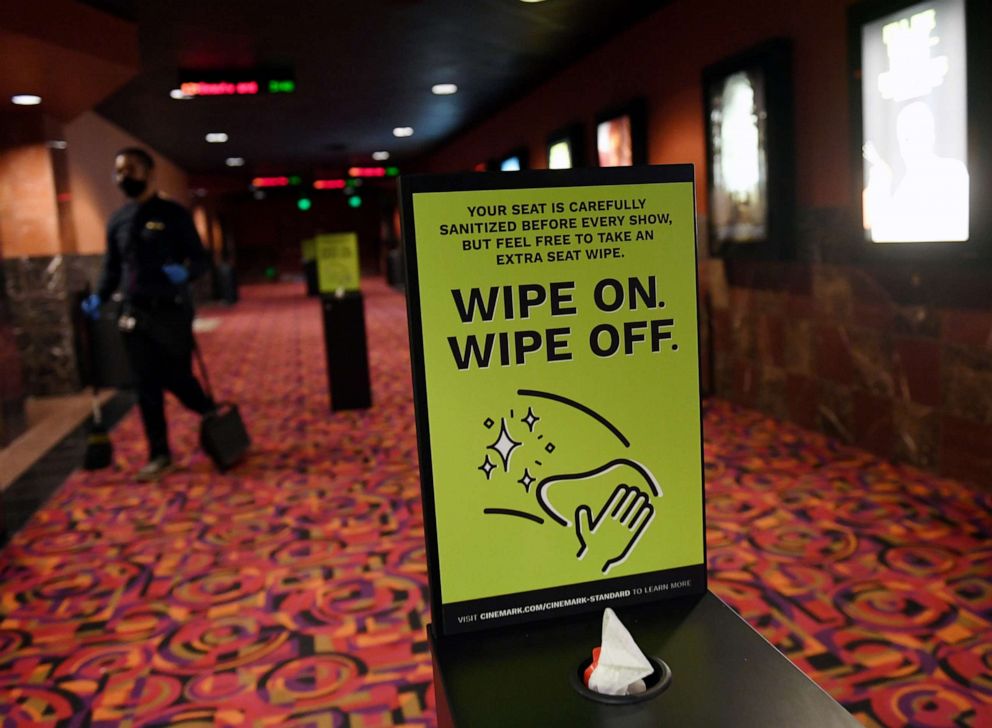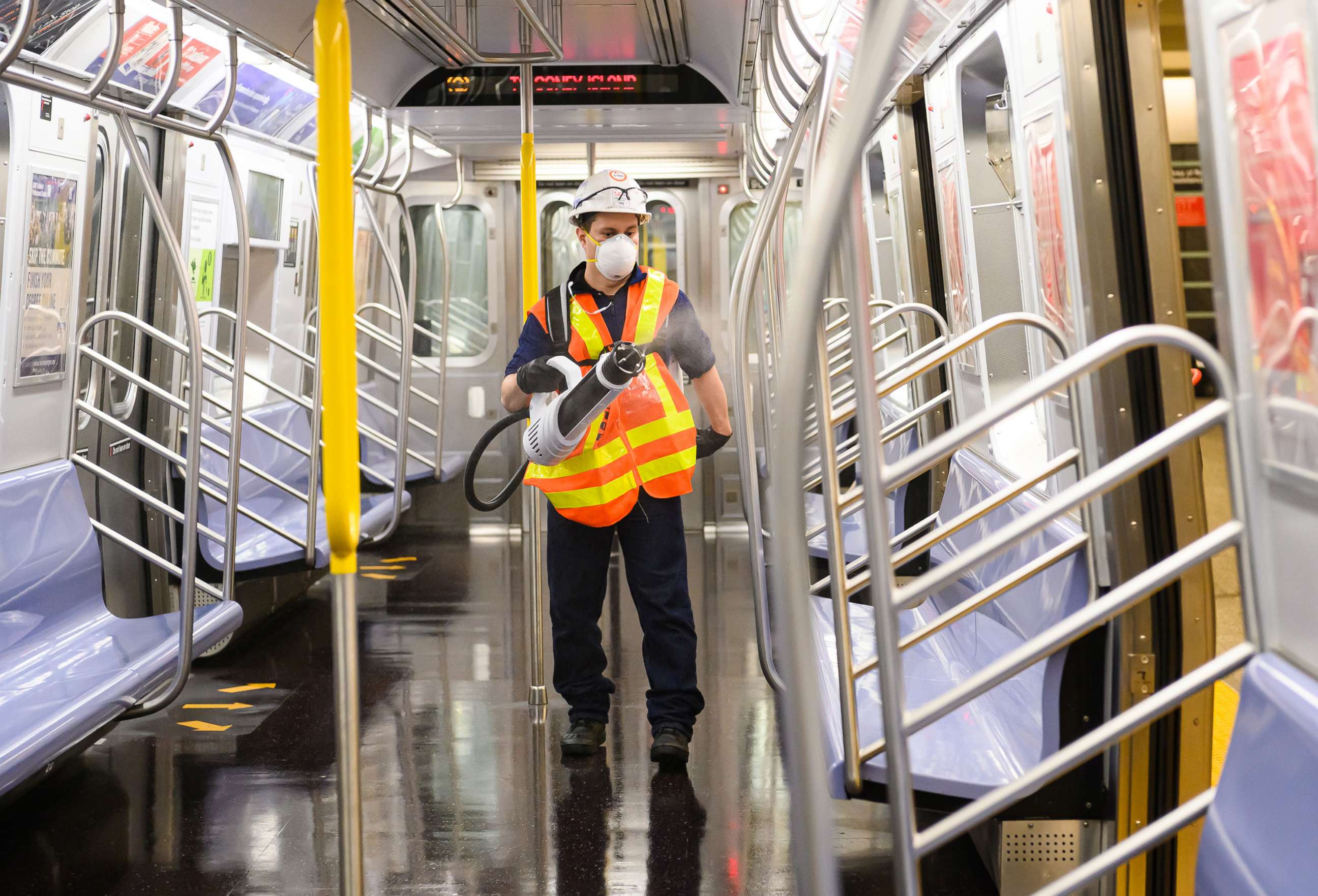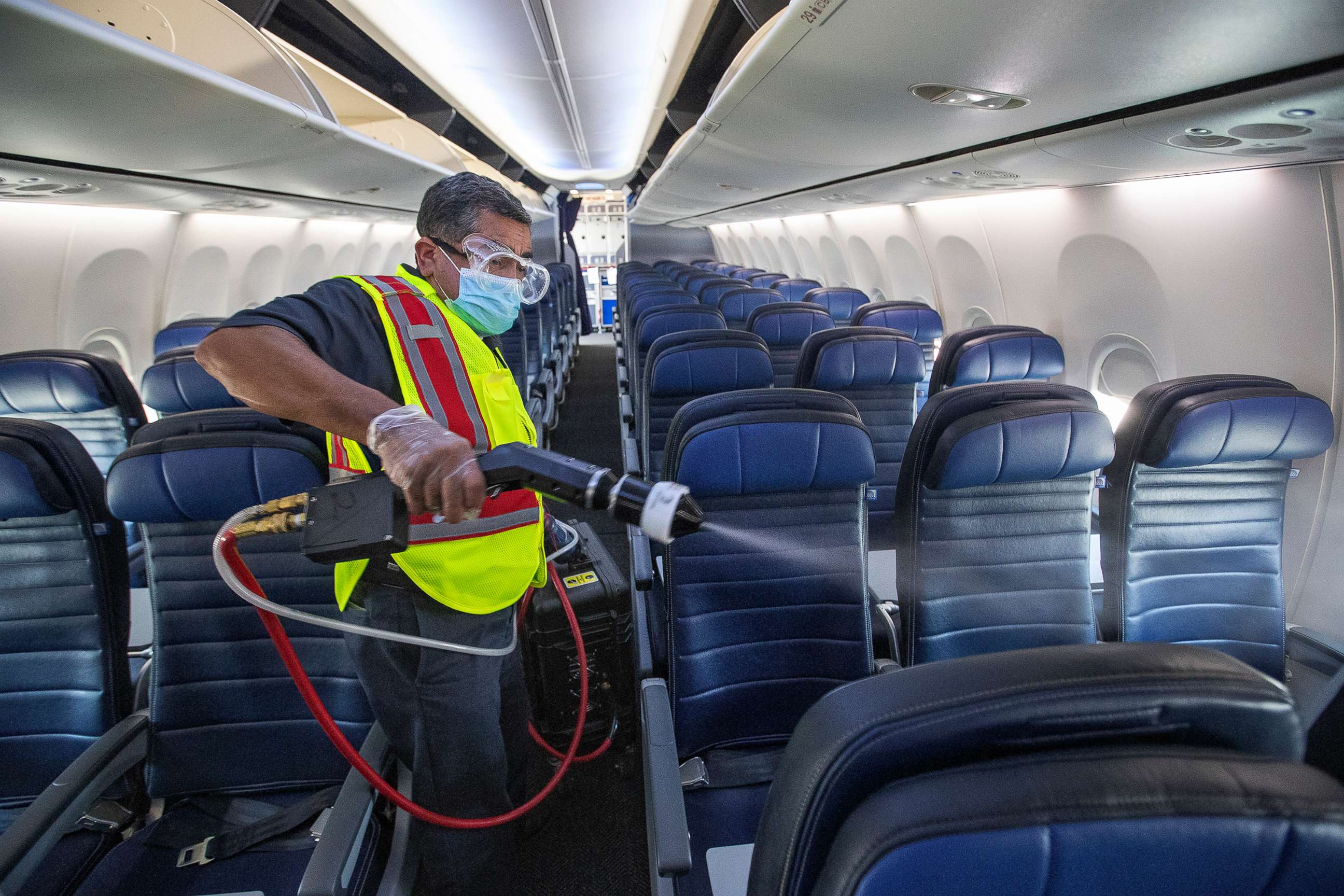'Hygiene theater': Disinfecting sprays and sanitizing robots alone won’t keep you safe from COVID-19
An obsession with surface cleaning may not be the best way to combat the spread.
As the daily headlines and mounting death tolls sow widespread anxiety among a population grappling with the coronavirus pandemic, many businesses and others have sought to ease fears through a newfound and costly obsession with deep cleaning and sanitizing.
The pandemic-era trend of publicly exhibiting all sanitation efforts has taken both the private and public sector by storm, but some medical experts express concern that these surface-cleaning endeavors may not be the most effective means of combatting the spread of the respiratory virus.
Hotels in California proudly display their $100,000 UV disinfecting robots. United Airlines similarly announced it was using high-tech antimicrobial-spraying robots on some aircrafts to ensure the "deepest cleanings." United noted that it was a complementary technology used in combination with masks and other measures.
The New York City subway system, which operates around the clock, announced nighttime closures for the first time in its history in order to disinfect train cars, a move that comes with an estimated additional price tag of $500 million in 2020 alone. That price tag includes a small portion for protective gear and temperatures checks for employees.
The often-overlooked sanitizing industry has boomed. Stock for Clorox reached a new all-time high last month, and has spiked some 35% in 2020. And a slew of private firms and startups touting disinfecting wands and other gadgets have also reported skyrocketing spikes in interest.

The public-facing displays of disinfecting efforts by companies have been dubbed "hygiene theater" in a recent The Atlantic article, which equated the showy presentations to the post-9/11 "security theater" phenomena, an endeavor that was slammed for focusing more on quelling people’s worries rather than actions that actually emphasized safety.
Is there a 'danger' in so-called hygiene theater?
Dr. Emanuel Goldman, a microbiology professor at Rutgers University and co-editor of the Practical Handbook of Microbiology, warned in a commentary published in the medical journal Lancet in July that the risk of catching COVID-19 from a surface has been "exaggerated" and became one of the major voices raising concerns over misdirecting resources to so-called "hygiene theater."
Goldman told ABC News that the "danger" of hygiene theater is that "it changes the focus from what will really protect you, and that is protecting what you breathe."
Obsessive cleaning in a pandemic is not necessarily a bad thing, Goldman clarified, especially for high-touch, high-traffic locations such grocery store checkout lanes.
"When you start applying this strategy to the New York City subways for example, public school systems, then it’s starting to be a bad thing, because it's wasting limited resources," he said. "In the case of the New York City subways, it's not only a huge hit on their budget, it’s also a tremendous inconvenience on their transportation system to be shut down every night."

Earlier this week, the New York Metropolitan Transportation Authority, the agency that runs the subway, issued a desperate plea for $12 billion in federal funding, warning that without it, all supplier contracts are in jeopardy.
Ken Lovett, a senior advisor to the chairman and CEO at the MTA, told ABC News in a statement that the MTA "resolved to do everything we could to keep our customers and heroic employees safe, and we continue to do that with round-the-clock cleaning and disinfecting of stations and rolling stock, piloting new methods like UV lights, anti-microbials and electrostatic sprayers, and requiring everyone in the system wear masks."
"Even while the subway fresh air exchange far exceeds the minimum rates required by the CDC for certain health care facilities and restaurants, we are tackling the aerosol issue by bringing new technologies to address the issue through the COVID Challenge and we will continue to respond in real-time to do everything we can to keep our customers safe," he added.
Goldman said that he also received an email recently from a teacher who read his research and told him her school board was planning on shutting the schools down one day a week for "deep cleaning."
"They have limited resources, that’s going to cost a lot of money, that’s going to cost time," he said. "I wrote the school board for her and miraculously, they listened to me, and redirected their budget to ventilation systems, because breathing is where you catch this disease."
Ultimately, high tech and pricey sanitizing equipment is not necessary in most cases, according to Goldman.
"Soap and water kills COVID," he said. "Ordinary alcohol kills COVID."
Dr. John Brownstein, an epidemiologist at Boston Children’s Hospital, told ABC News that so-called hygiene theater can be "really important" in certain circumstances -- such as healthcare settings or places where high-risk individuals live or work, where he says, "we want to do everything as much as possible to reduce transmission."
He added, however, that "these kinds of interventions are not absolutely appropriate for every setting."
What is the risk of catching COVID-19 from a surface?
Brownstein explained to ABC News that there was a "theoretical risk" that you could catch COVID-19 from a surface, but it is "probably not the predominant mode of transmission."
The U.S. Centers for Disease Control and Prevention states that "it may be possible that a person can get COVID-19 by touching a surface or object that has the virus on it and then touching their own mouth, nose, or possibly their eyes, but this isn’t thought to be the main way the virus spreads."
The international World Health Organization says that fomite transmission is "considered a likely mode of transmission" for COVID-19, but adds that despite evidence that the virus can survive on surfaces, "there are no specific reports which have directly demonstrated fomite transmission."
The U.N. health agency also noted that people who come in contact with potentially infectious surfaces often also have close contact with an infected person, making distinctions between respiratory droplet and fomite transmission difficult to discern.
While there have been studies conducted in the past that show COVID-19 can live on surfaces, Goldman said that in real-world scenarios outside of a lab he found evidence of surface (or fomite) transmission of the virus "to be extremely weak."

"A lot of steps have to happen before you would get transmission of the virus from a surface," Goldman told ABC News. "First, you would have to have someone infected cough or sneeze on that surface. Next, you would have to have the individual touch that surface within I would say within the hour or two, and then without washing their hands in between touch their faces, mouth, ears or eyes."
He added that there is then a "presumed risk" of catching the virus that way.
"I don’t want to misinform people," he added. "Hand-washing is still important. Proper hygiene is still important. That would be important even if there was no pandemic -- That’s what we should be doing anyways."
If not obsessive surface cleaning, where should efforts be focused?
Brownstein said that one of his biggest concerns with hygiene theater is that "it's just not sustainable."
"We’re asking the population and industry to do a lot and at some point there is going to be pandemic fatigue," he added.
He noted that the more experts attempt to enforce these sorts of efforts around a theoretical risk, "the more chance people are just going to, basically, not want to implement them."
"We know that things like mask-wearing is so critical, let’s focus on the handful of issues that we know are driving those transmissions," he added.
Similarly, Goldman told ABC News that, "the most important things that can be done is to wear a mask."
While hygiene theater has been largely welcomed by an anxious public, mask-wearing, what experts say is one of the best lines of defense against the spread, has become a flashpoint in the U.S.
Besides strict adherence to mask-wearing, both experts said social distancing, moving indoor activities outdoors, and improving ventilation systems are key for combatting the virus' spread.
Finally, Goldman said if you are entering a store or restaurant or elsewhere, don't look first to their hygiene theater routine for assurance. Rather, he recommends checking out if all of the workers and people are wearing masks, what socially-distancing measures are being implemented and even asking about ventilation efforts.




